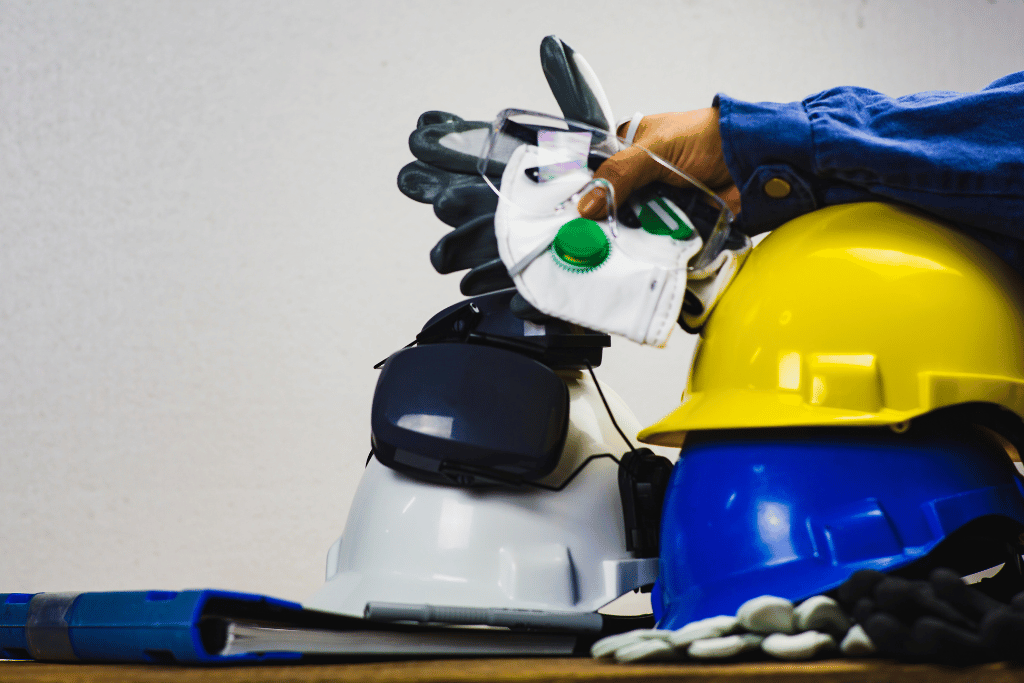As world health concerns continue to heighten and the need for PPE becomes more apparent, manufacturers are feeling the heat to find more efficient ways to create quality, reliable products in bulk.
Injection Molding as an Essential Process for PPE
Injection molding is one of the most important methods used to manufacture PPE due to its ability to produce a long-lasting, reliable, and cost-effective product. In this blog, we discuss the importance of PPE injection molding in the production of PPE plastic equipment, specifically in getting the critical plastic, protective rubber, and metal components into the hands of those who need it most.
Types of PPE Plastic Equipment
Personal protective equipment is specialized clothing or equipment worn by an employee for protection against infectious materials. In a medical or industrial context, examples of protective PPE plastic equipment include face shields, goggles, mask frames, respirator components, and the like. These plastic parts have to be durable but also comfortable and clean. Doing so requires not only the right design but also the right production technology — and that’s where PPE injection molding really excels.
Why Choose Plastic Injection Molding for Your PPE Products?
Injection molding is a process of forming the plastic into a mold cavity. Once the part has cooled and solidified, the mold opens, and the part is pushed out. These characteristics make it particularly advantageous for PPE injection molding:
High-Volume Production
Injection molding is the perfect way to get tens of thousands, hundreds of thousands, or even millions of identical parts with such little variance. For PPE plastic equipment, this translates into providing hospitals, labs, and industry with standardized products that reliably function when it matters.
Precision and Consistency
PPE typically involves complex geometries and very close tolerances. Injection molding provides outstanding accuracy for parts made exactly to specifications. That predictability is critical when, for example, products like face shield brackets or respirator seals need to fit comfortably (and work as expected) every time they come off the line.
Speed and Efficiency
Once a mold is produced, an injection molding cycle only requires seconds to a few minutes to complete, depending on the part. This quick cycle time allows plastic manufacturers to meet an urgent need, such as during a public health emergency.
Material Versatility
Plastic materials ranging from rigid to flexible resins can be processed by the injection molding process. This flexibility also makes it easier for plastic manufacturers to customize PPE plastic equipment to specific needs, meaning that materials that are softer or more comfortable, for example, can be used in the straps of a mask, while tougher polymers can be used for long-lasting face shields.
Low Cost In Large Runs
Although the cost of mold design and creation is expensive initially, the unit cost of the molded part decreases as production volume increases. This is what makes PPE injection molding cost-effective for the mass production of PPE plastic equipment.
Typical Injection Molded PPE Products
The injection molding process is used to manufacture many PPE plastic equipment items utilized in day-to-day operations across various industries:
Face Shield Frames
Injection-molded frames are featherweight yet strong and styled for all-day use. These frames should cradle the clear shield and create a seal while providing enough room for N95 masks.
Respirator Mask Components
Some masks have molded plastic housings that contain filtration media or valves. These components must be both accurate and robust, especially in industrial or medical environments.
Safety Goggles
Frames for protective eyeglasses need to be manufactured to strict size standards so that lenses fit tightly and provide maximum protection.
Nose Clips on Masks and Adjusting Straps
Some small but critical components, such as nose clips and strap adjusters, are manufactured using PPE injection molding for durability.
How the Plastic Industry Is Helping to Respond to the Demand
The worldwide need for PPE is constantly evolving, and plastic manufacturers have played a key role in scaling up production. These companies have responded to spikes in demand quickly, for example, during pandemics or in disaster areas, thanks to advanced PPE injection molding technology. Today, many producers leverage automation, multi-cavity molds, and cleanroom facilities to deliver clean and continuous production of PPE plastic equipment.
What’s more, environmental sustainability is on the rise in the industry. Many plastic manufacturers are turning to recyclable or compostable plastics for non-medical PPE plastic equipment, aligning with growing environmental awareness without sacrificing functionality.
Ready to Manufacture Your PPE Plastic Equipment?
With the world being more health- and safety-conscious than ever before, ensuring your PPE plastic equipment meets standards is critical. PPE injection molding has become a cornerstone in the manufacturing of PPE plastic equipment, thanks to its consistency, scalability, and efficiency. From hospitals to factories, the products that safeguard our frontline workers and employees are often made possible through this exact, powerful process.
For plastic manufacturers, adopting PPE injection molding is not just about meeting today’s demand—it’s about preparing for tomorrow’s challenges. With the right combination of technology and materials, producing life-saving PPE plastic equipment can become smarter, faster, and more reliable than ever before.



